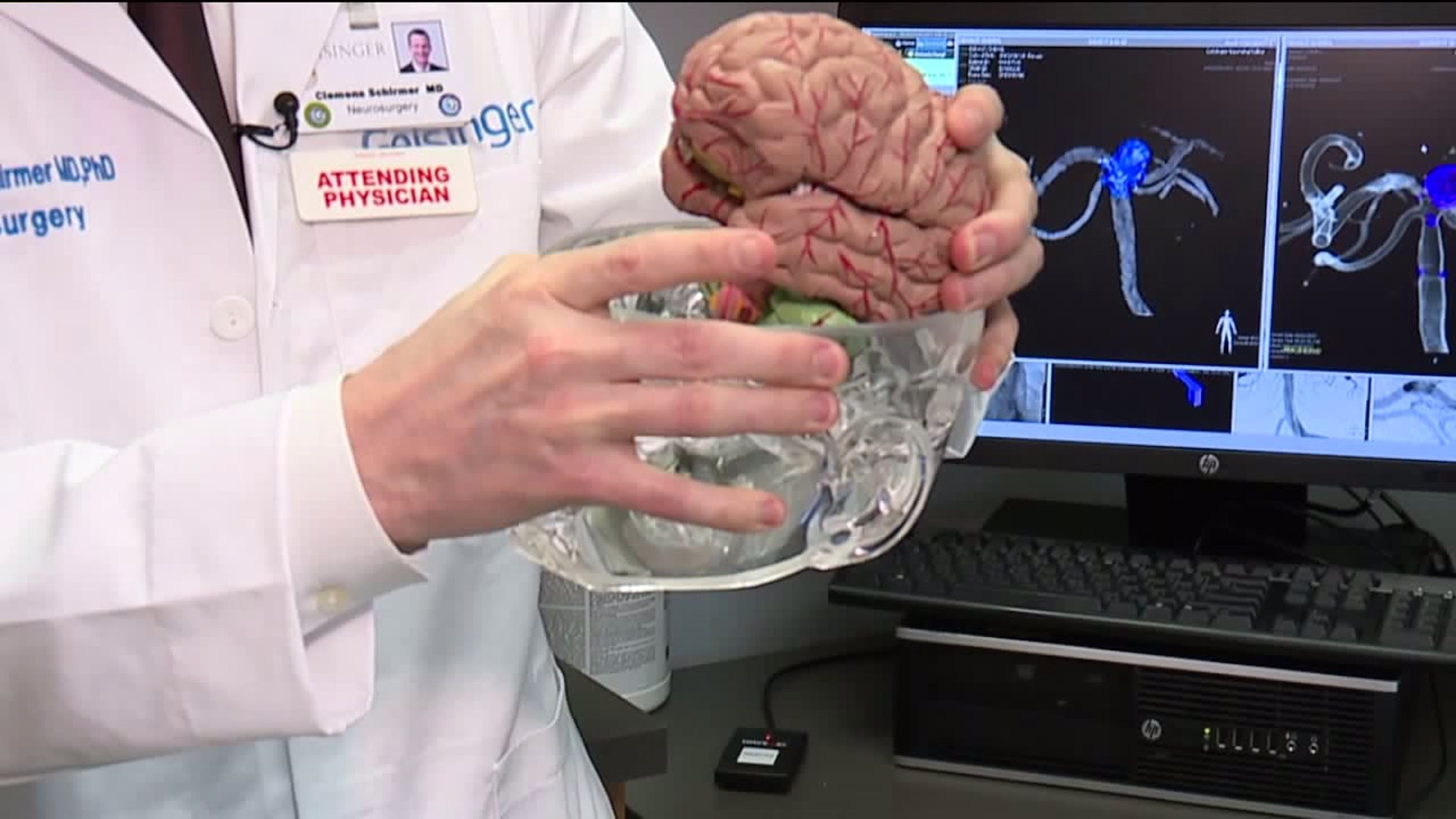LUZERNE COUNTY -- Each year in the United States, about 30,000 people will suffer a brain aneurysm rupture, and about 40 percent of them will not survive it, according to the Brain Aneurysm Foundation.
A woman in Luzerne County says her sister survived a brain aneurysm which led to doctors being able to treat her with a new device.
Cheryl Dehaut, 56, from Forty Fort, remembers what happened after her sister survived an aneurysm in a blood vessel that ruptured in her brain.
"They determined that the type of aneurysm she had could be hereditary," Dehaut said. "The neurosurgeon suggested my brother and I be tested to see if we had the same type of aneurysm."
Her brother didn't, but Cheryl did. Every two years since, she has been checked to make sure it hadn't grown. This last scan, it had.
"You got used to, 'This is nothing. Don't worry about it,' to all of a sudden, it's in your face! OK! Gotta do something."
Dr. Clemens Schirmer is the neurosurgeon at Geisinger Wyoming Valley Medical Center who treated Cheryl. He explained that in her case, it was surgery or take her chances.
He showed us where in Cheryl's brain a bubble that was at the base of her skull in the basilar artery, which runs along the brain stem, then splits into two vessels.
To prevent it from growing any larger, Dr. Schirmer recommended they use a new device called the PulseRider.
"It starts in the normal vessel and it has two leaflets that allow us to put it under that bifurcation, or branching point, and have a scaffolding effect. It does what stents used to without having to be in the two branches," Dr. Schirmer explained.
The PulseRider is now approved for use only in specific conditions, including Cheryl's type of aneurysm.
Doctors were able to insert it into her brain through a small cut in her groin area and it worked. She will still need to be monitored for growth but for now is feeling great and wishes something like this had been around for her sister.
"Unfortunately, she had to go through a very difficult surgery, very risky, but thanks to her, I was able to identify mine and have it repaired before it ruptured."
Cheryl was the first person on whom the PulseRider was used at Geisinger, but Dr. Schirmer says he has used it on several patients since.

